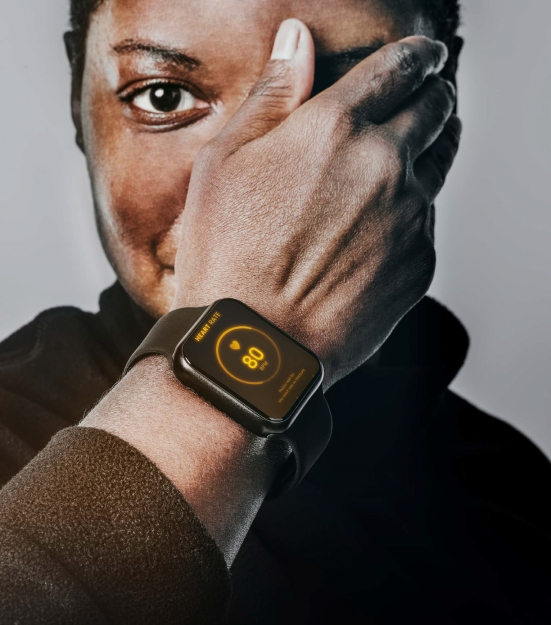As technology becomes ever present in our day-to-day lives, it’s no surprise wearable fitness devices are popular. While there are no quick fixes or magic solutions in health, wearables can be a powerful tool on your fitness journey.
Fitness wearables have come a long way in the last two decades. The original GPS watches were bulky, inaccurate and fairly complex. They weren’t ideal for everyday fitness activities, and their expense often priced out all but serious enthusiasts and high-performance athletes.
Today, the devices are slimmer, faster and much easier to use. Users can find anything from a basic step counter to a wearable capable of tracking heart rate, pace, distance and altitude. As the technology improves, the question remains: are wearables a useful fitness tool, or just another fad?
Know the limits
While many wearables are marketed as a sure fix to any failing fitness routine, the truth is any health program requires a whole-person approach in order to be successful. You have to look at every aspect of your health, including how much you exercise, what you eat and how much you sleep. Wearable fitness devices won’t solve all your problems overnight, but when used properly, they can be a powerful tool to help you improve your health.
One key to successfully using a wearable device to improve your fitness is consistency. If you don’t use your wearable device every day, or at least every time you work out, it won’t collect enough data to show accurate trends about your health.
Mike Latour, Monument Health Director of Musculoskeletal Care, said, “Health and fitness is a long game. It’s all about doing something consistently over time — that’s the only way to create real change.”
Just like keeping a food diary can help you log calories and get accurate insight into what you consume, fitness wearables collect data that will show the truth about how active you actually are. It’s a great way to stay accountable, and be able to make informed decisions about lifestyle changes.“Ultimately that’s what this whole trend of wearables is about; now you can get information, change your behavior and then see how that change actually affects your health status. Whether it’s sleeping, weight loss or whatever your goal is,” Mike said.
Interpret the data
Once you’ve selected a wearable device, it’s important to understand the data it’s giving you. No wearable will be perfect — in fact heart rate monitors in most wearables are estimated to be accurate 85 to 90 percent of the time. Even less accurate are calorie burn rates, as most trackers rely on preprogrammed algorithms that may or may not actually suit your body type.
So the question remains: if the data isn’t completely accurate, is it still useful? Absolutely.
“All things being equal, if you use the same device consistently over time, then you’re measuring your data with the same inaccuracies,” Mike said. “So you will still be able to see trends because you’re measuring in the same way over a period of time.” Another key to the puzzle is context. “I think most people need to remember that even things like heart rate are more of a proxy for what is actually happening inside the body,” said Scott Guidotti, General Manager of Monument Health Sport Performance Institute Powered by exos. “For example, you can have a near-death experience when you’re driving your car, and you’re not necessarily physically active, but your heart rate will certainly spike.”
Rather than treating your wearable device as an absolute truth, Scott recommends that you look for trends over time, while also considering real life circumstances that may change your data. If you didn’t sleep well, for instance, or you’re feeling under the weather, that may be the true cause behind a dip in your results.
Reap the benefits
Possibly the most powerful way a wearable device can help improve your fitness is by keeping you accountable. Many come with their own apps that allow you to track your progress, but also compare and compete against others who use the same device. It’s a great way to motivate yourself to make fitness a habit and strive to meet your goals.
“Where I see them being super beneficial is for things like accountability and building community,” Scott said. “Community and culture are probably two of the biggest things that are going to drive buy-in and keep people coming back.”
Another aspect to wearables most users don’t consider is their ability to help you maximize your rest and recovery time.
Mike said, “Some devices will now give you what’s called a readiness score, which looks at resting heart rate, what your trend is over time, what your heart rate variability is and some other information over time and how well you’re recovering from your exercise.” Using this data, wearables will give you recommendations on when you might want to take it a little easier during a workout, or when you’re ready to push a little harder.
At the end of the day, the most important part of the equation is whether you are meeting your fitness goals. Wearable devices are a great tool, but they aren’t the only key to success. “The activity that you’re doing is more important than what’s going on in the wearable. So I don’t want people to beat themselves up if their wearable doesn’t work, or doesn’t track a workout, or whatever,” Scott said. “They need to be proud of themselves for actually moving and doing the work.”
How to pick a wearable fitness device that suits your goals
Before you even set foot in a store, you need to have a goal in mind. Once you’ve decided what your overarching goal is, you can narrow your search.
For example, Mike said, “There are some wearables that track in real time, and some that track after the fact. An Oura ring (left) doesn’t give you real-time data, it’s only after the fact. So if you want to see what you’re doing during a workout, you’ll probably want something different.”
When choosing your next wearable, these are features you might consider based on your goals:
Weight loss: watch for heart rate monitoring and activity tracking that will show you how active you are throughout the day so you can see trends. As a bonus, some will even alert you when you’ve been inactive for a long period and help you build healthy habits.
Improve running: look for GPS capabilities so you can track both distance and elevation, not to mention your pace and splits. If you’re a long-distance runner, make sure you get one with a long battery life.
Recovery: heart rate monitoring, but also the ability to track and interpret your sleep and how long you spend in various states of sleep. Something else to consider that isn’t necessarily a feature: how comfortable it is to wear while sleeping.
Garmin Forerunner $195
Fitbit Inspire 2: $99
Oura ring: starting at $299
Getting the most out of your smart device
No matter which wearable device you choose, there are a few things that will help you get the best results.
Be consistent: Even if you only want to track your workouts, wearing your device all day can do two things. It gets you in the habit of wearing it, so you don’t forget it and miss a workout, but it can also provide more in-depth data about your daily routine.
Check in often: When you take your device off the charger in the morning, take a minute to reaffirm the goals it’s helping you track so they’re top of mind. Similarly, check your progress from time to time throughout the day, and review your results before you go to bed.
Make it social: If you have friends or workout buddies with similar goals, check in with them too. Set up a competition to see who can reach their daily steps first, or see if your device has a built-in community like Peloton or Fitbit.
Understand what it’s telling you: While many devices offer heart rate monitoring and number of calories burned, they aren’t entirely accurate. Avoid making huge changes to your routine based numbers from only one workout. To really get the full story, you need to track and interpret your data over time.



